Here is the process.
Using TinEye Lab’s Color Engine, and using the centermost frame of each video, I was able to identify their color palette. I then used that palette and reduced it to the 9 main colors I selected. It is important to note that while the Color Engine analyses each video using the same procedure for consistent results, I determined the final composition of the color palette subjectively. See the analysis for each video below.

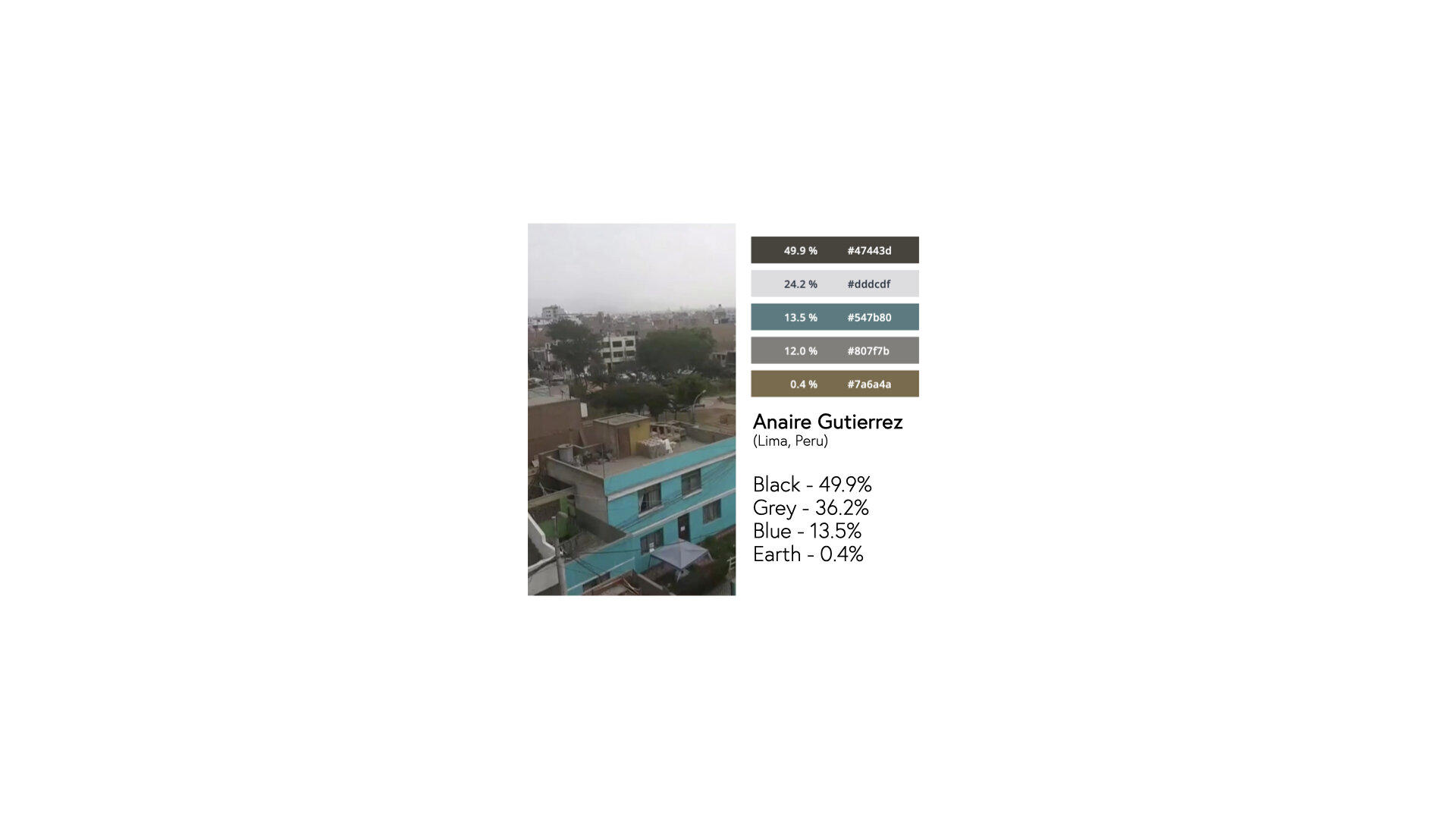
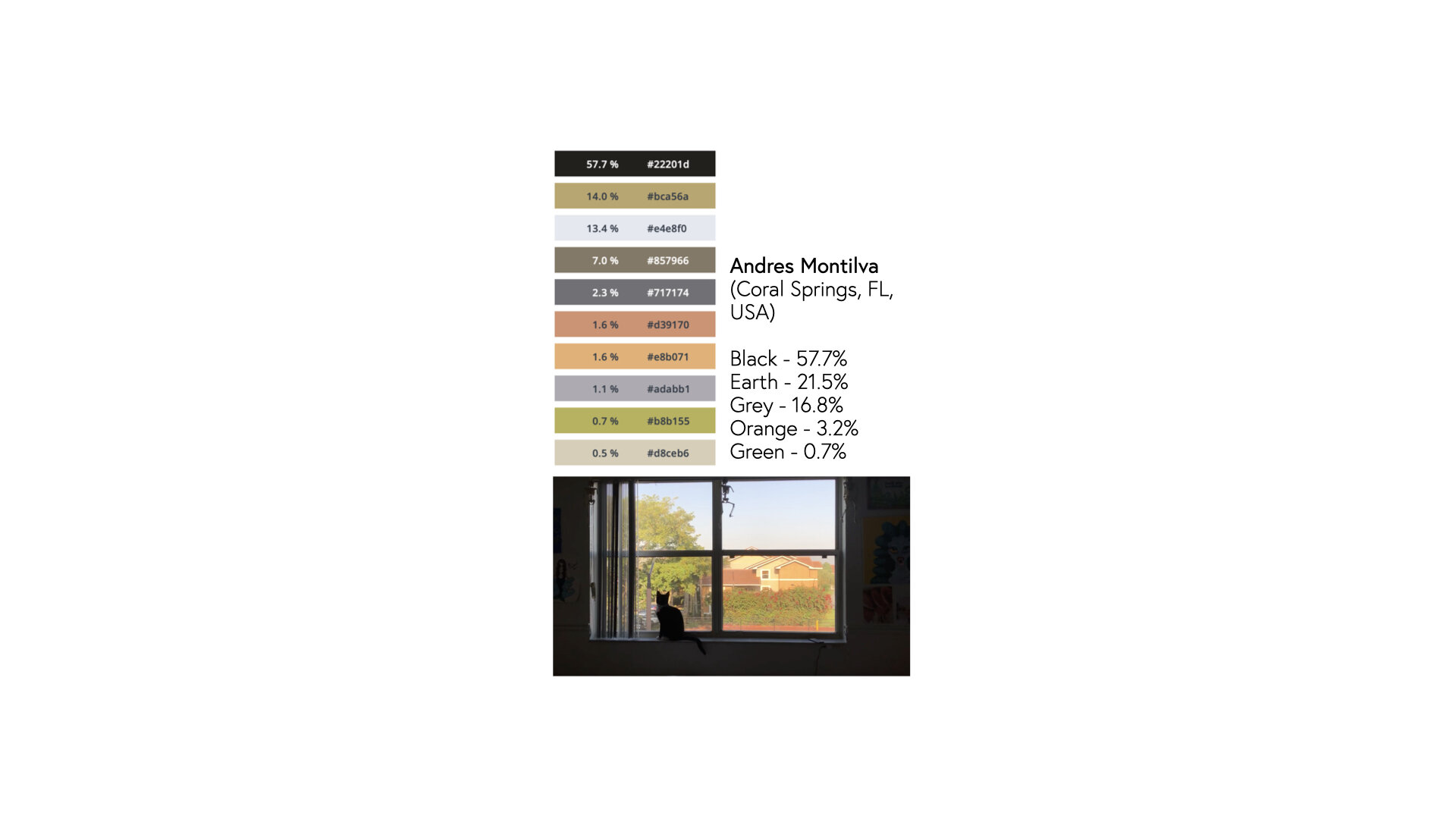
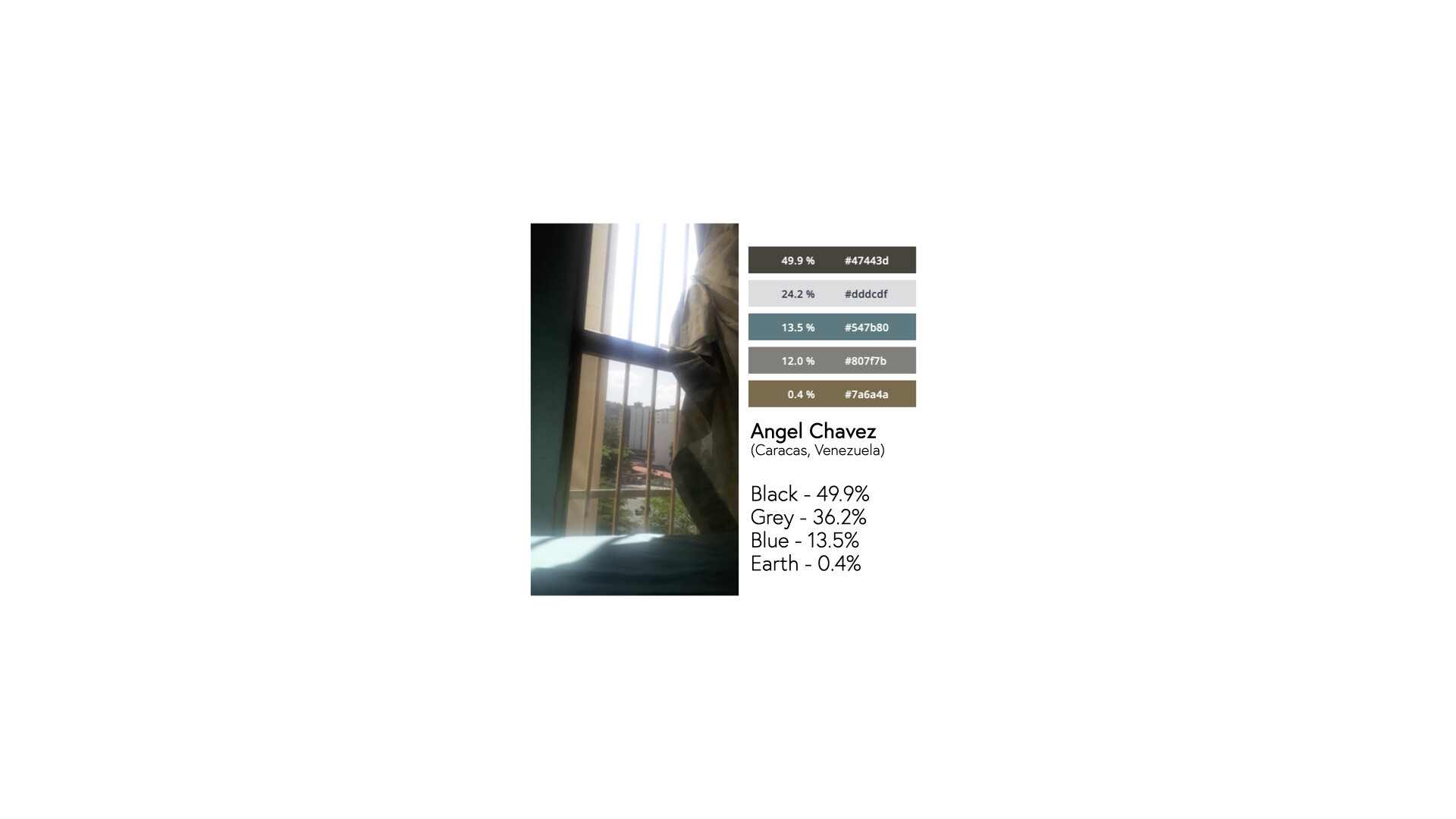
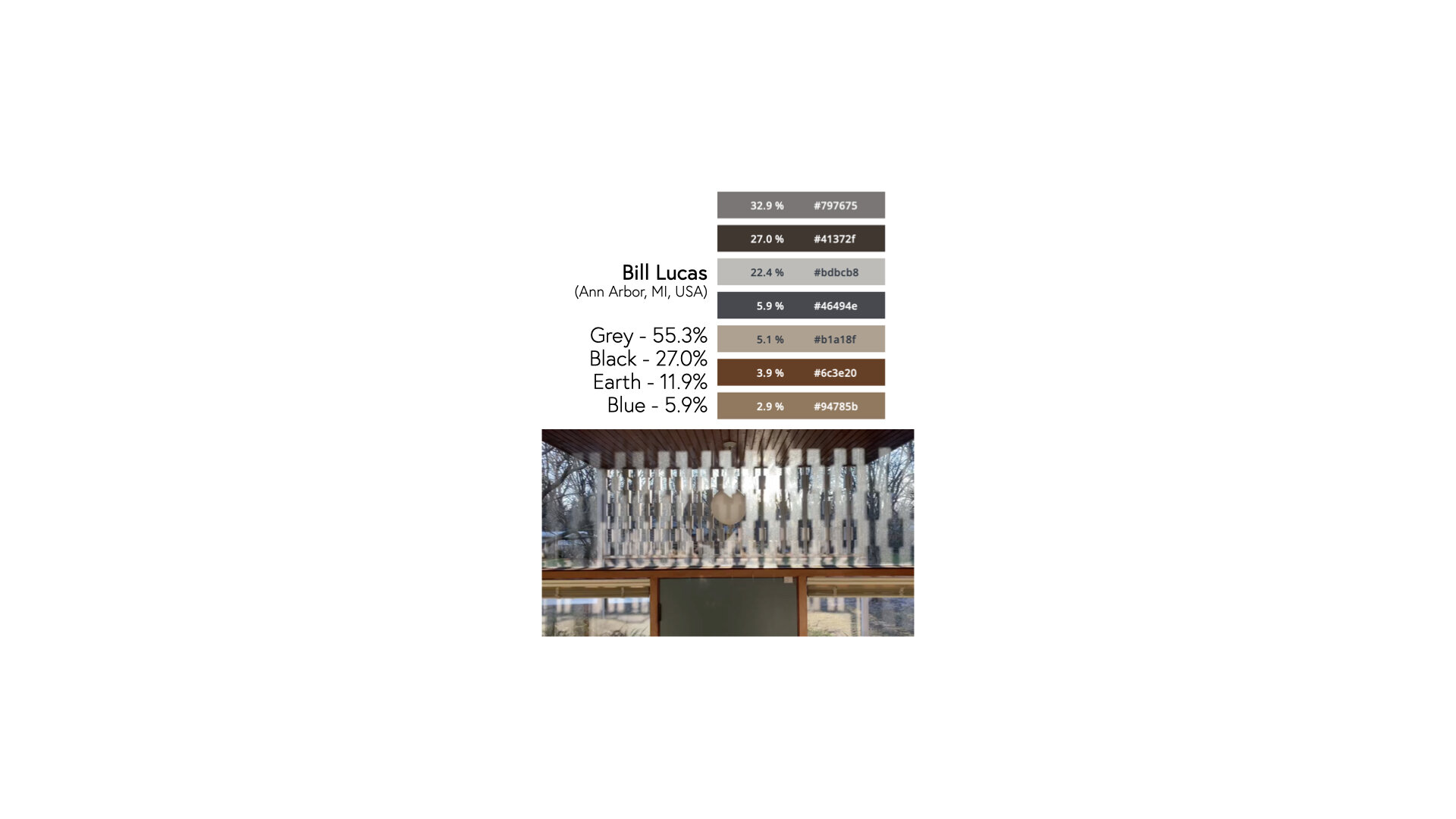
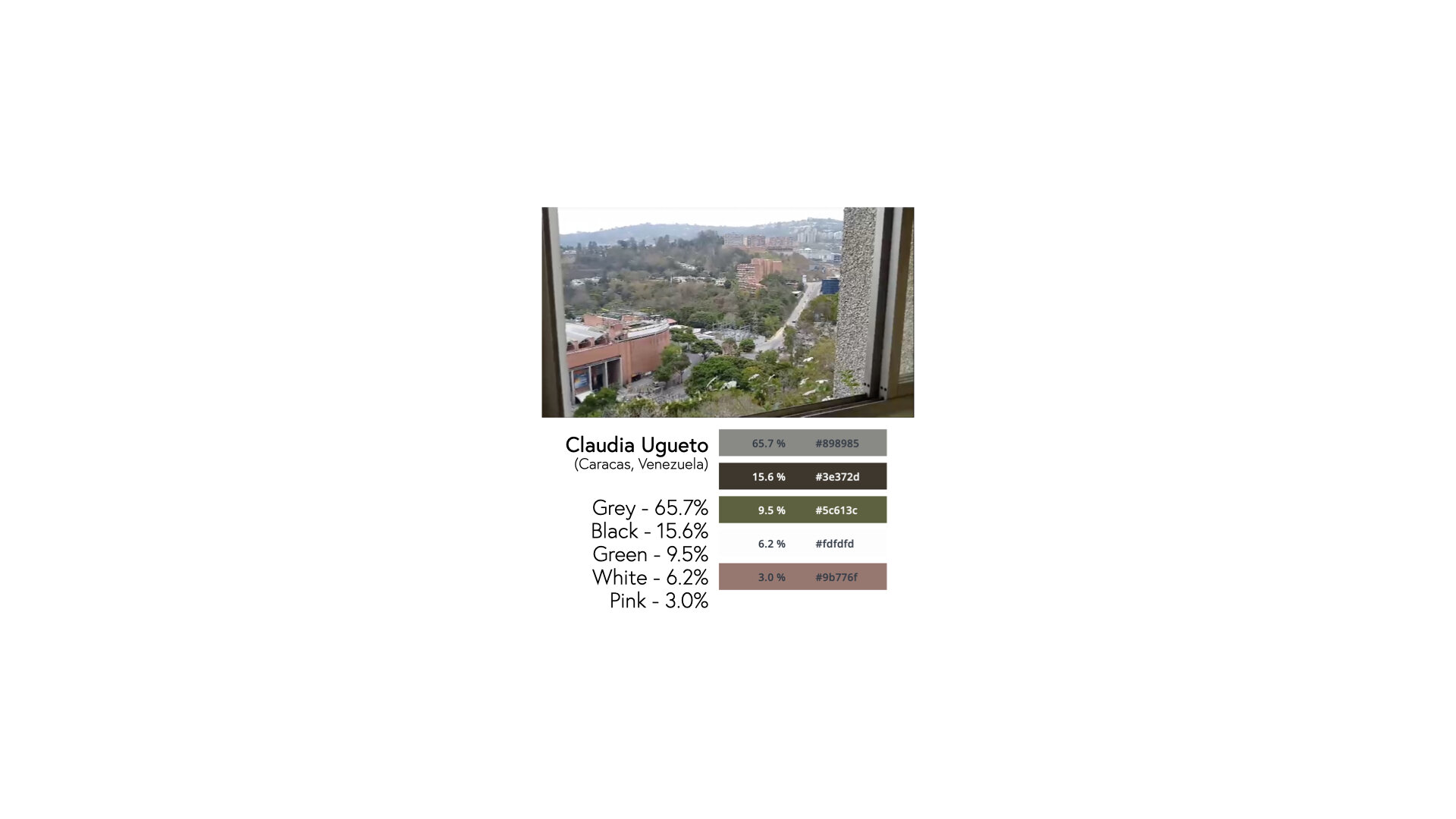
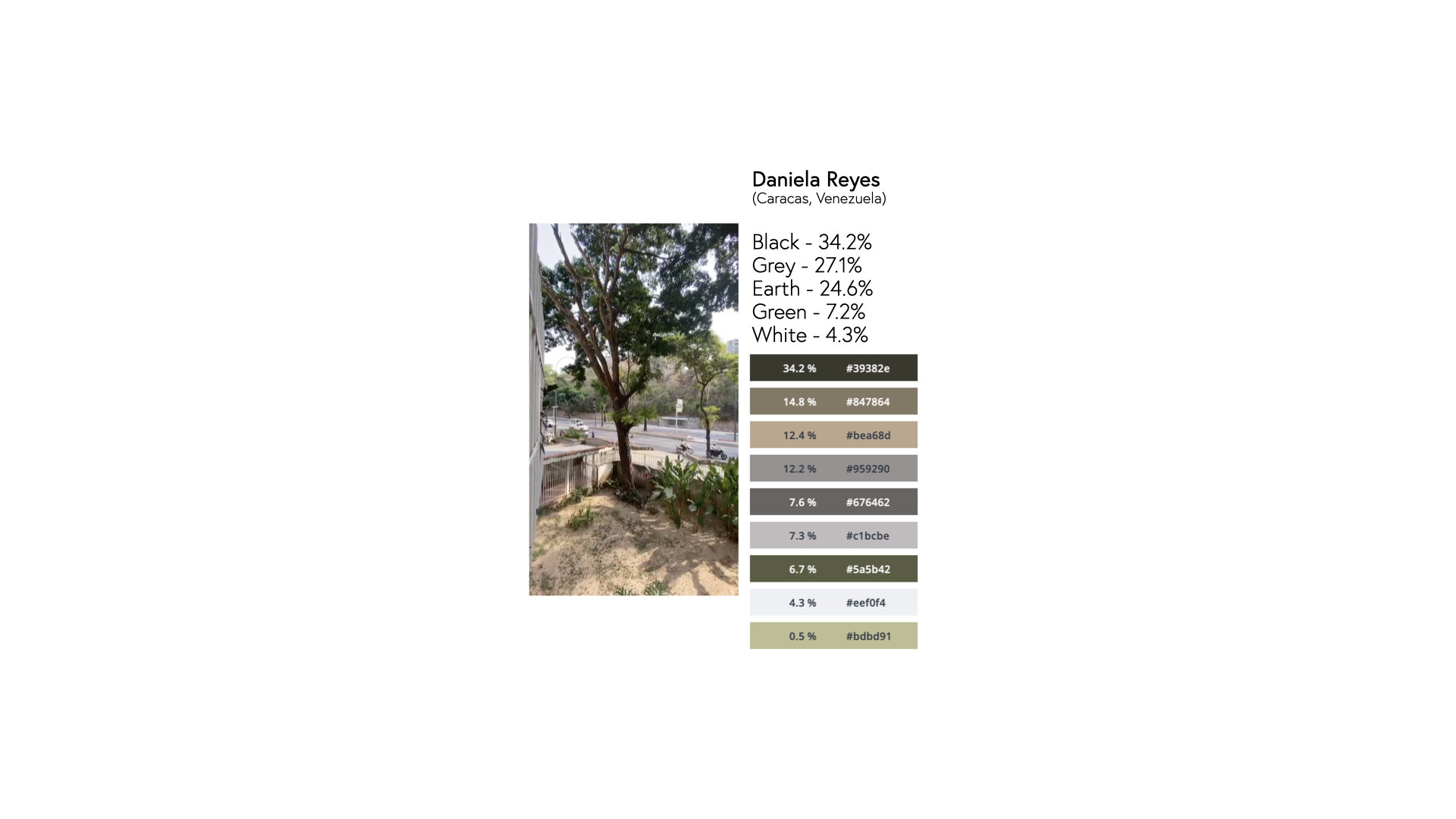


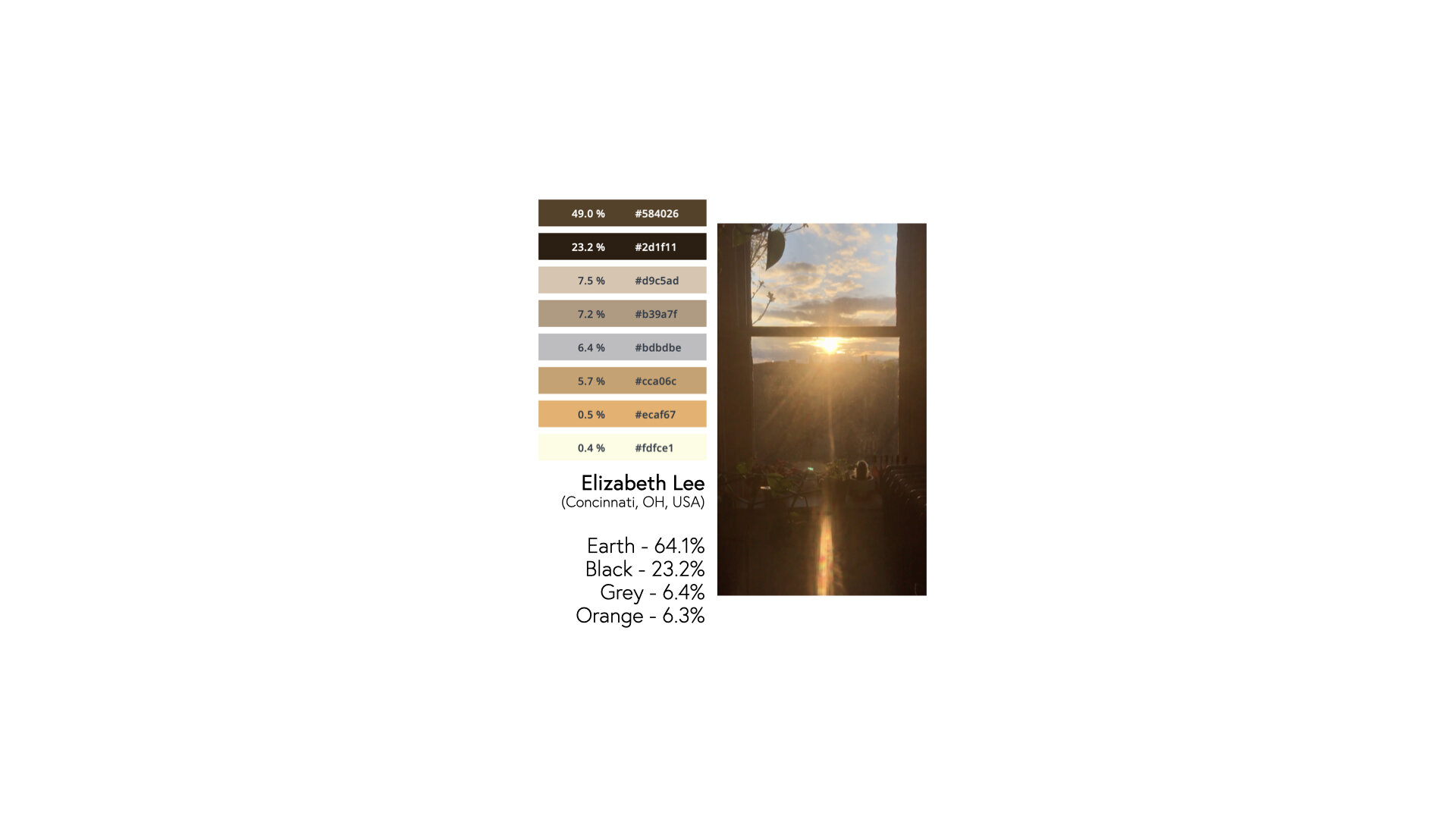


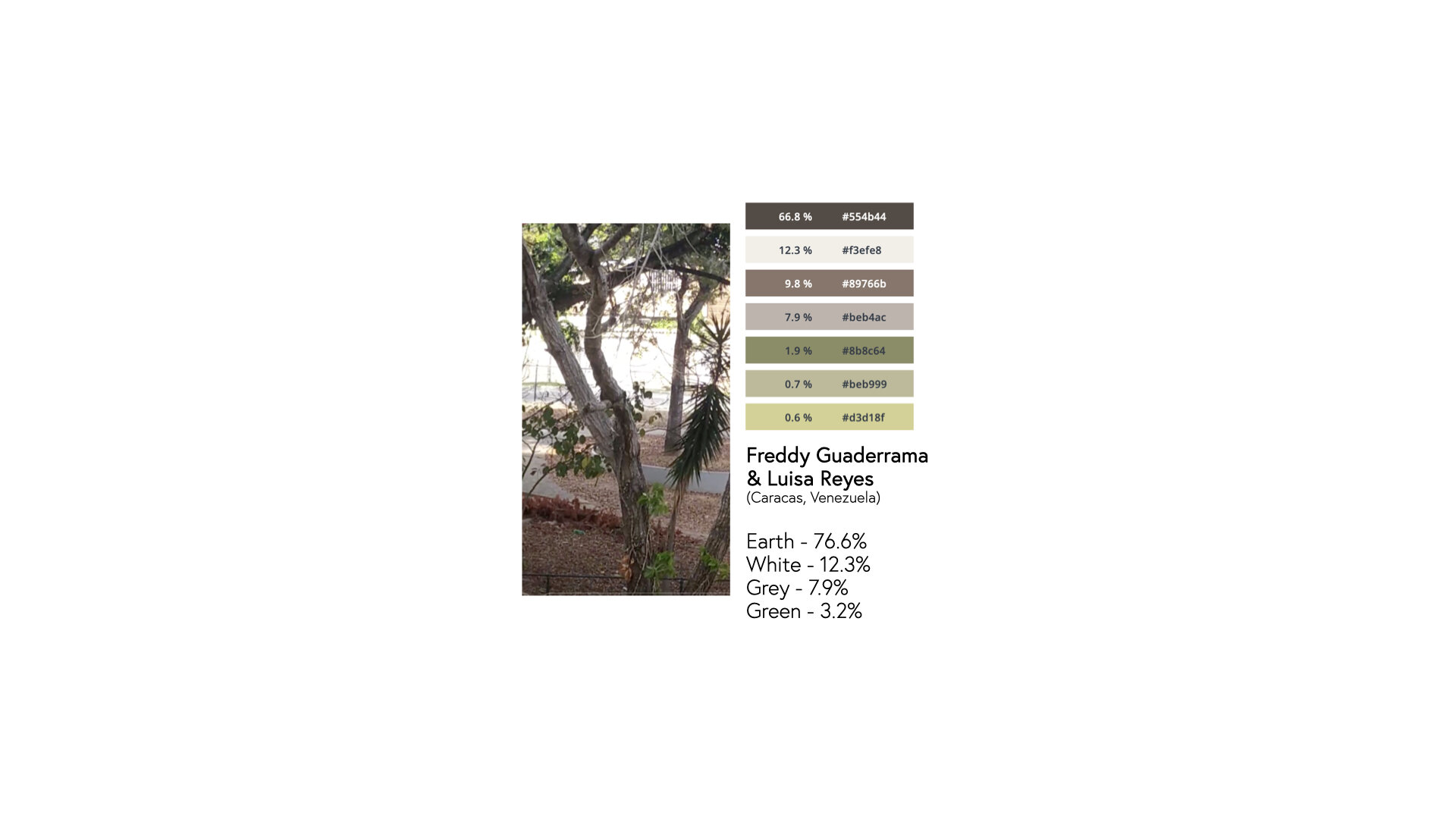

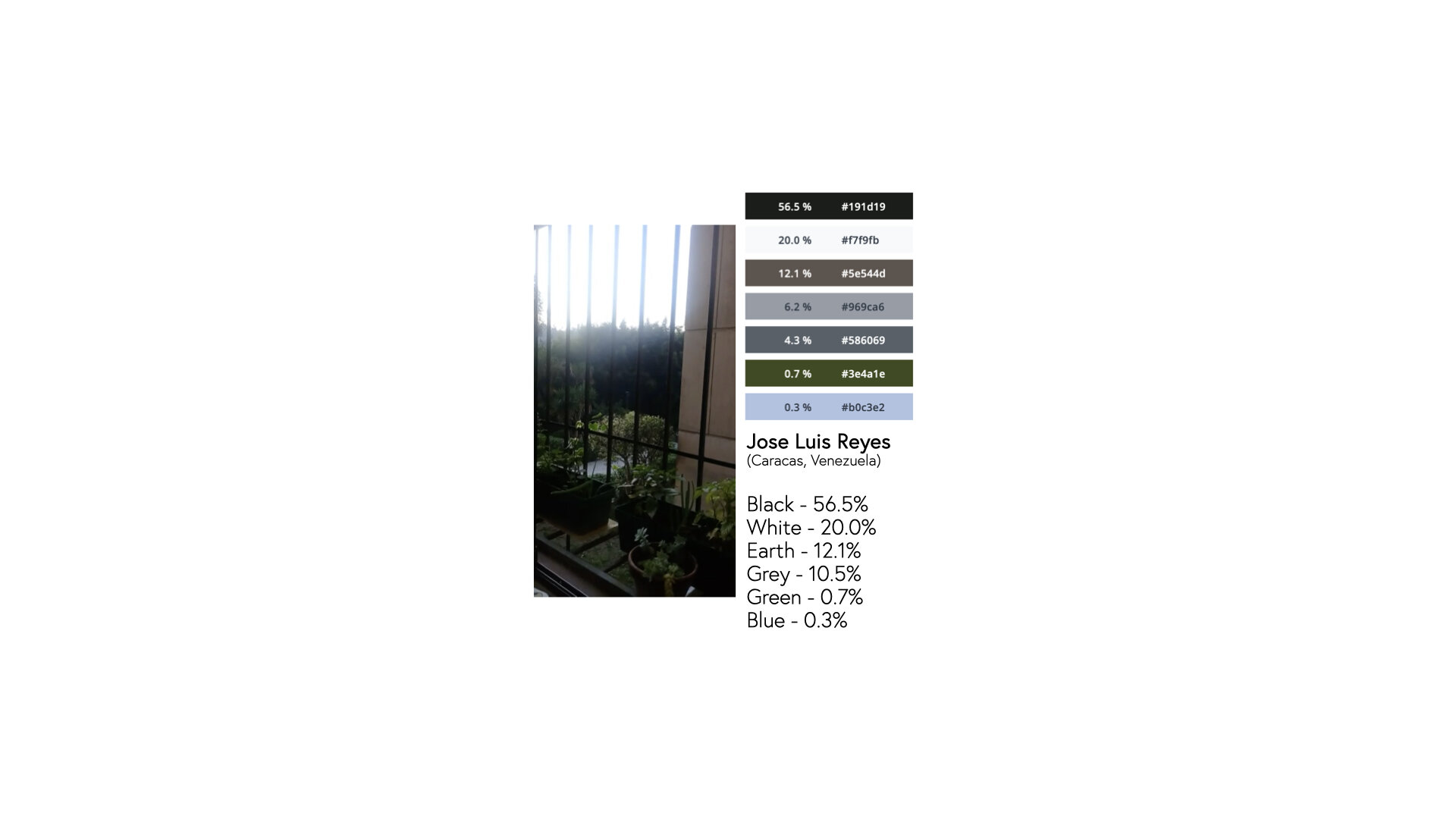
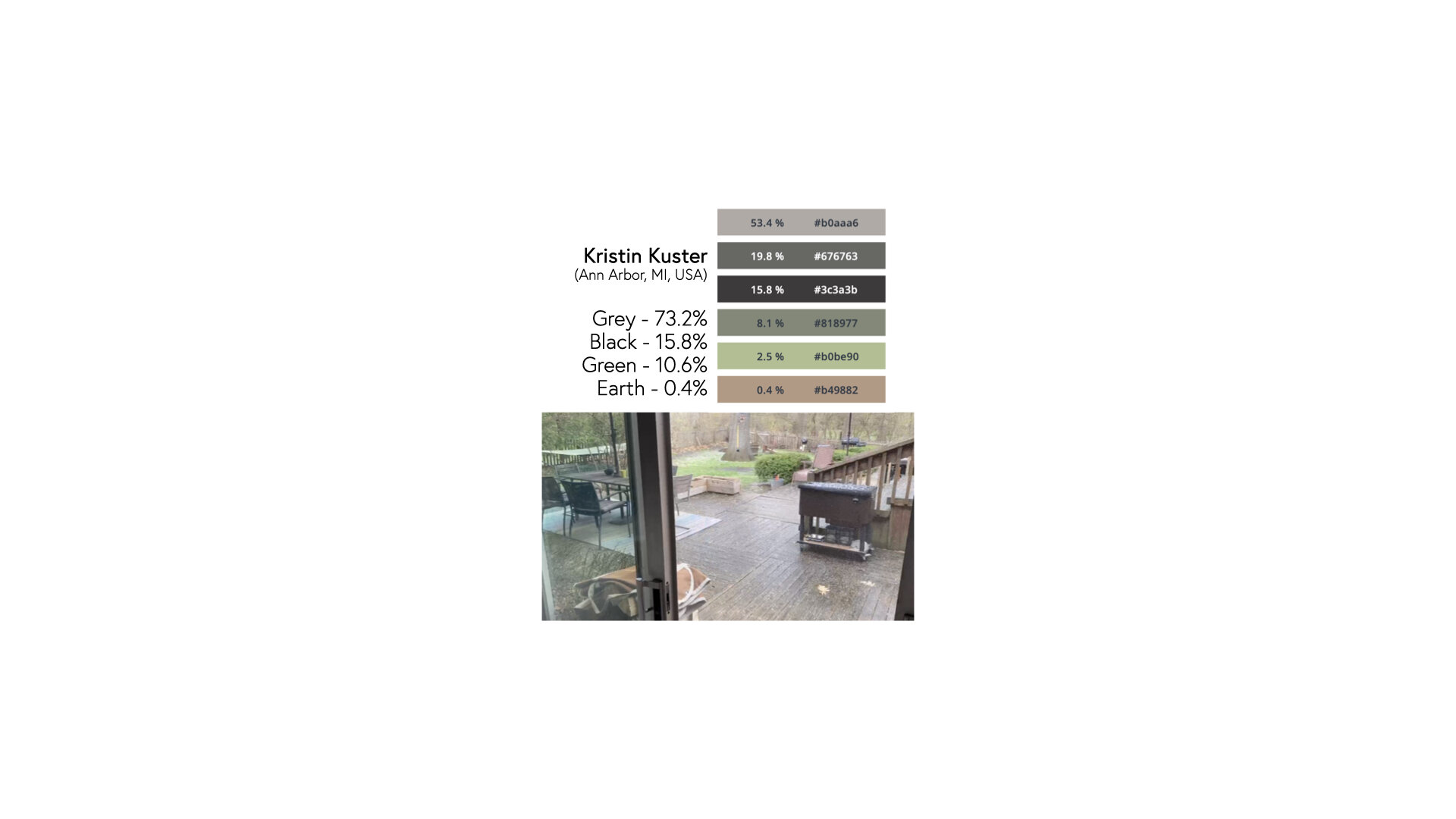


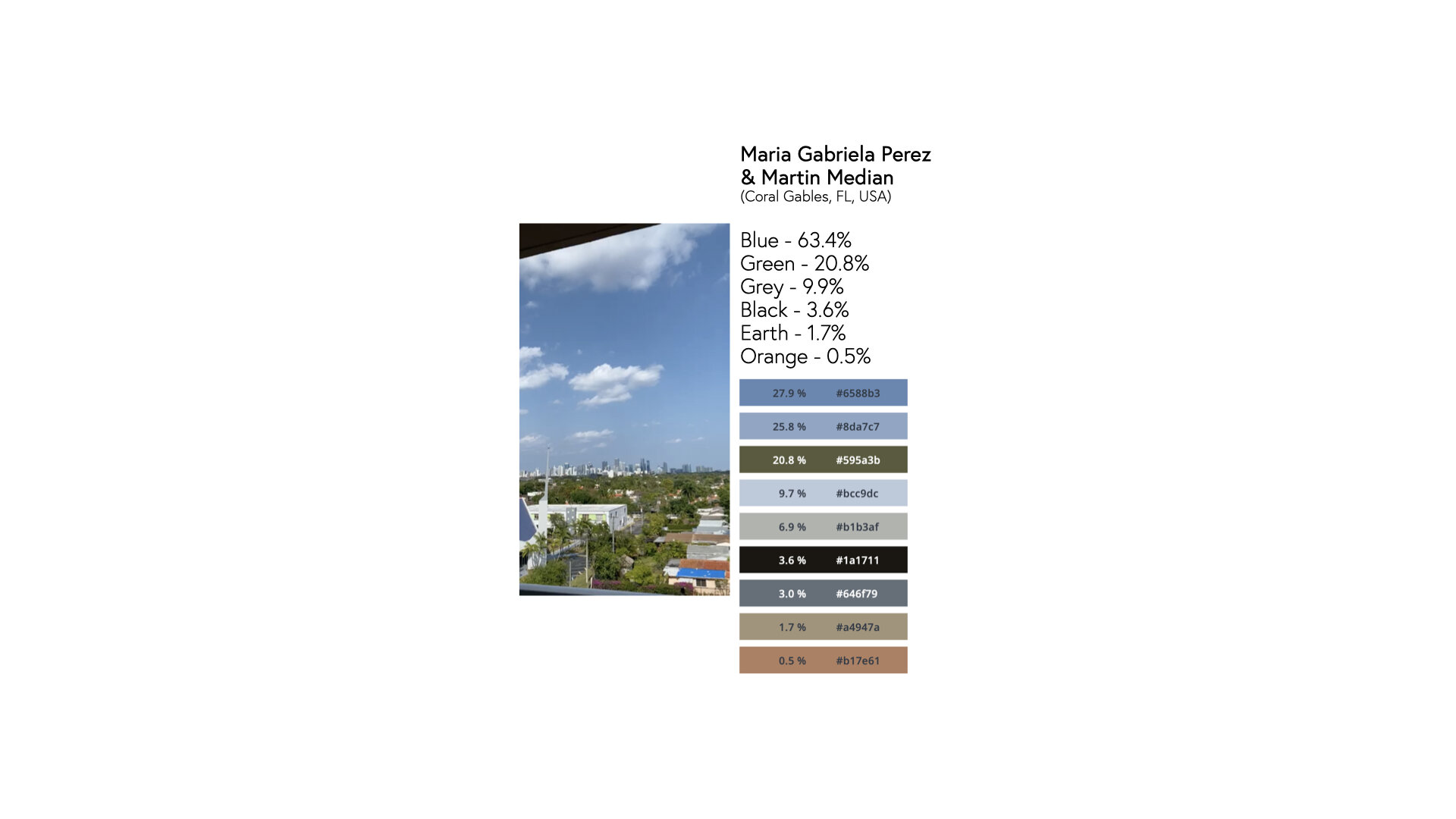
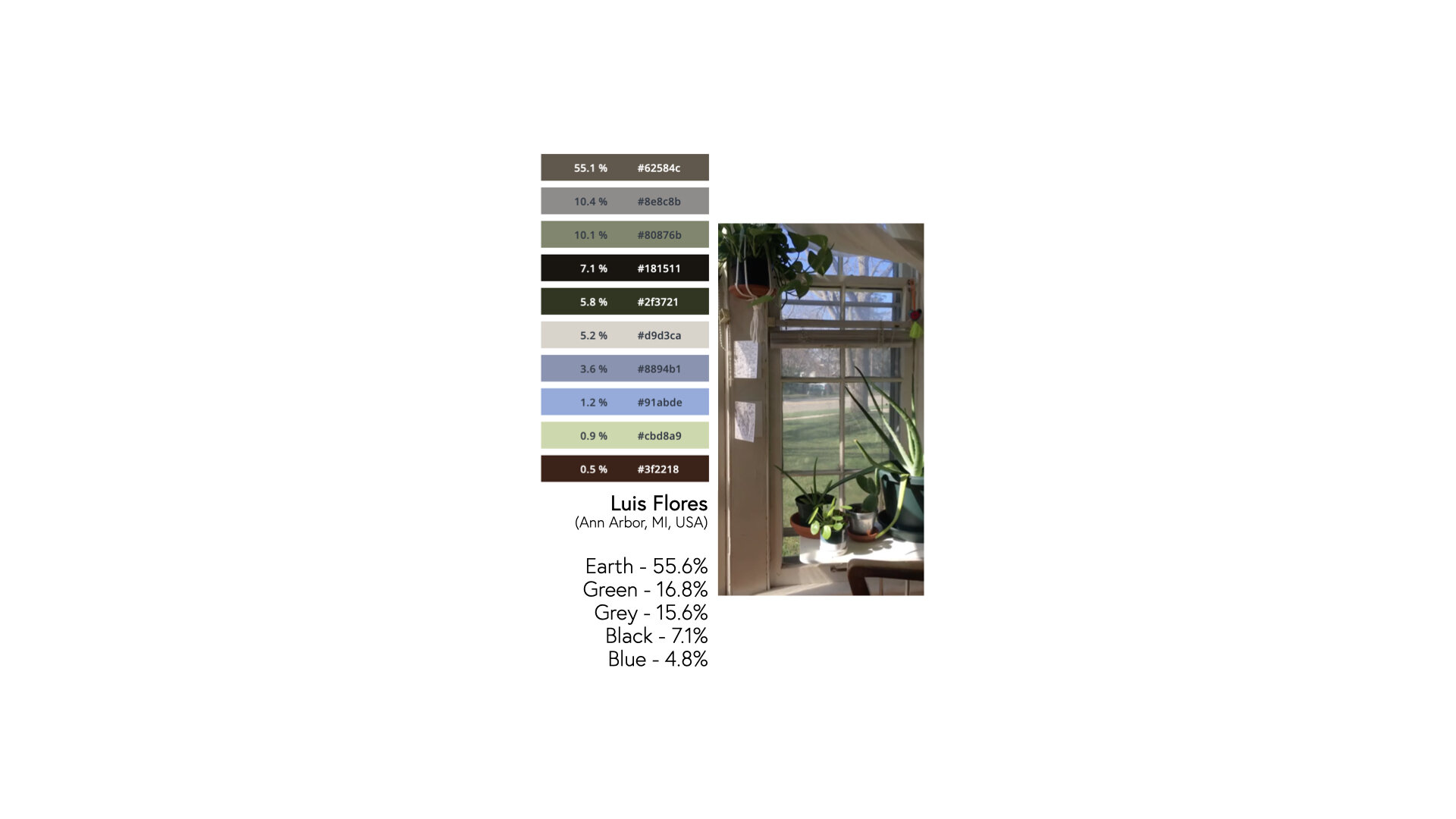

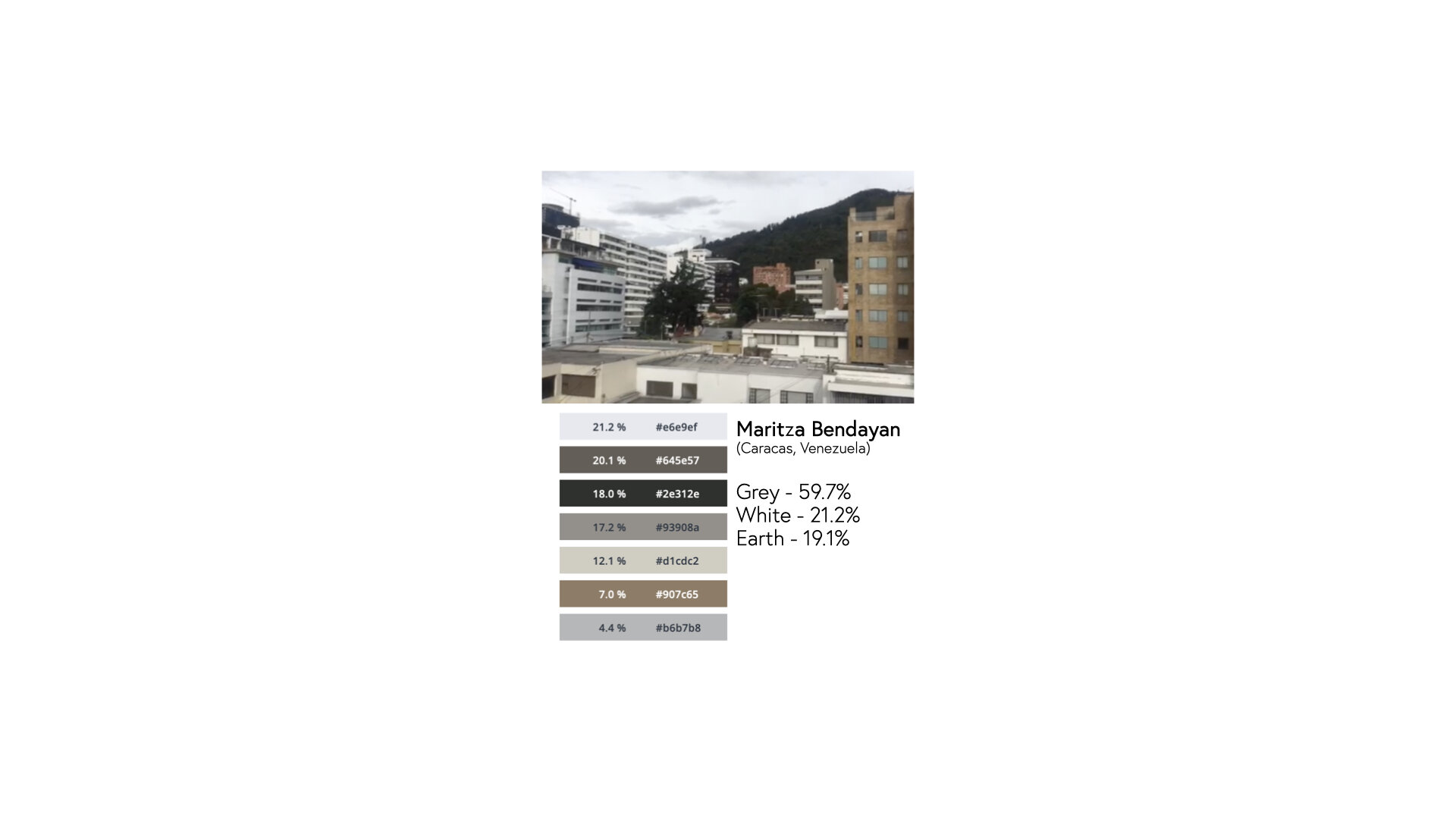
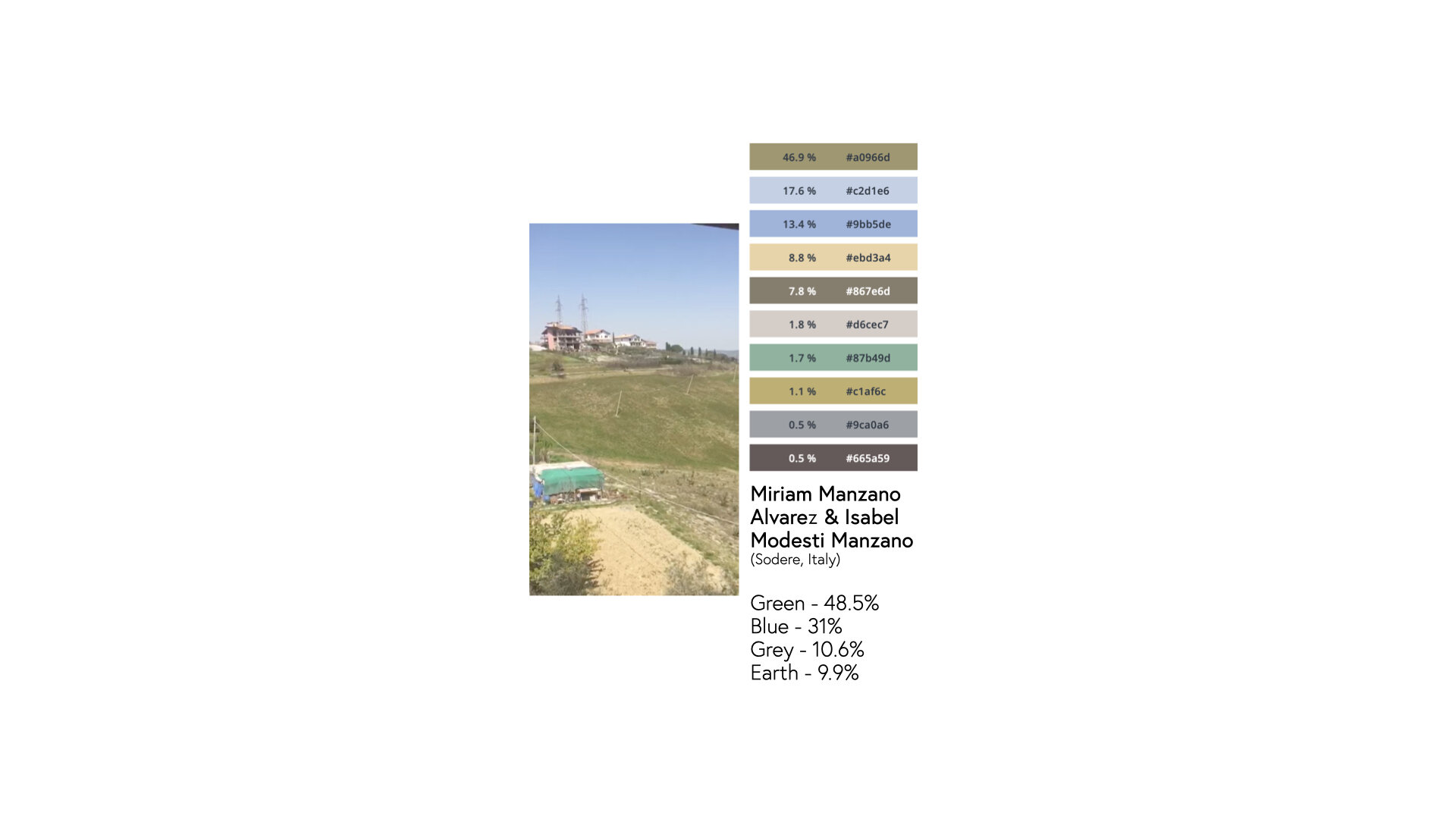
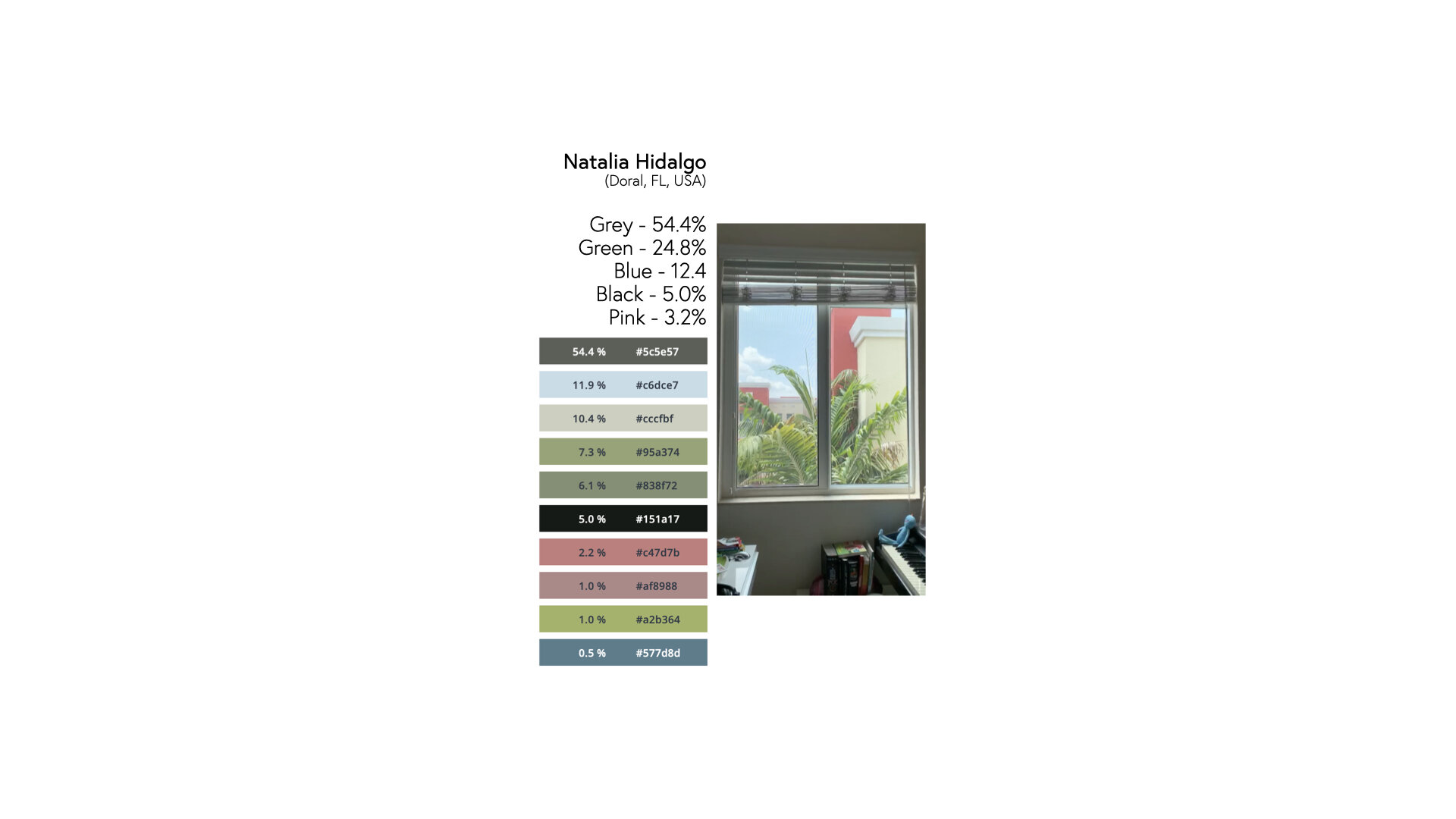
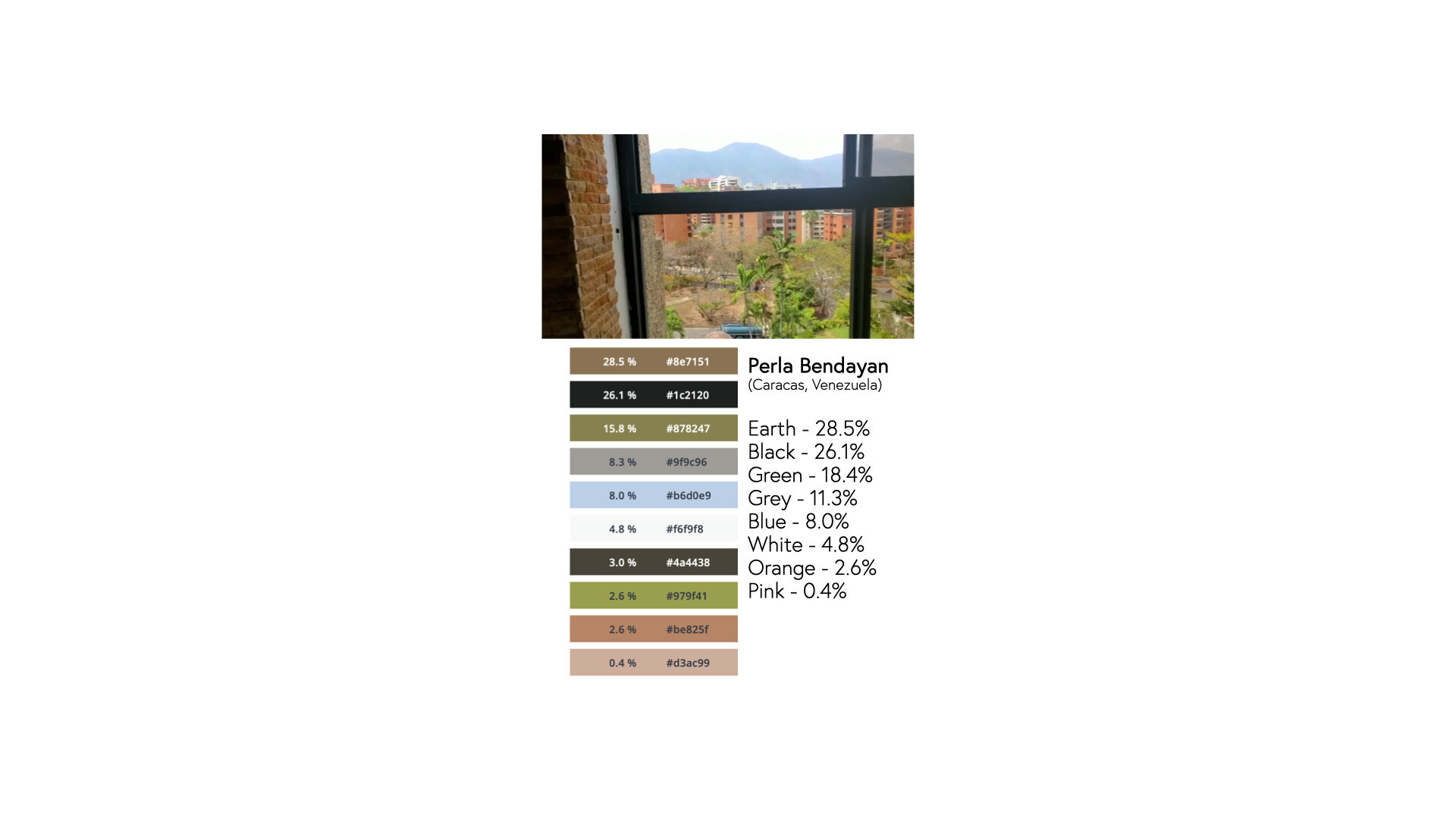

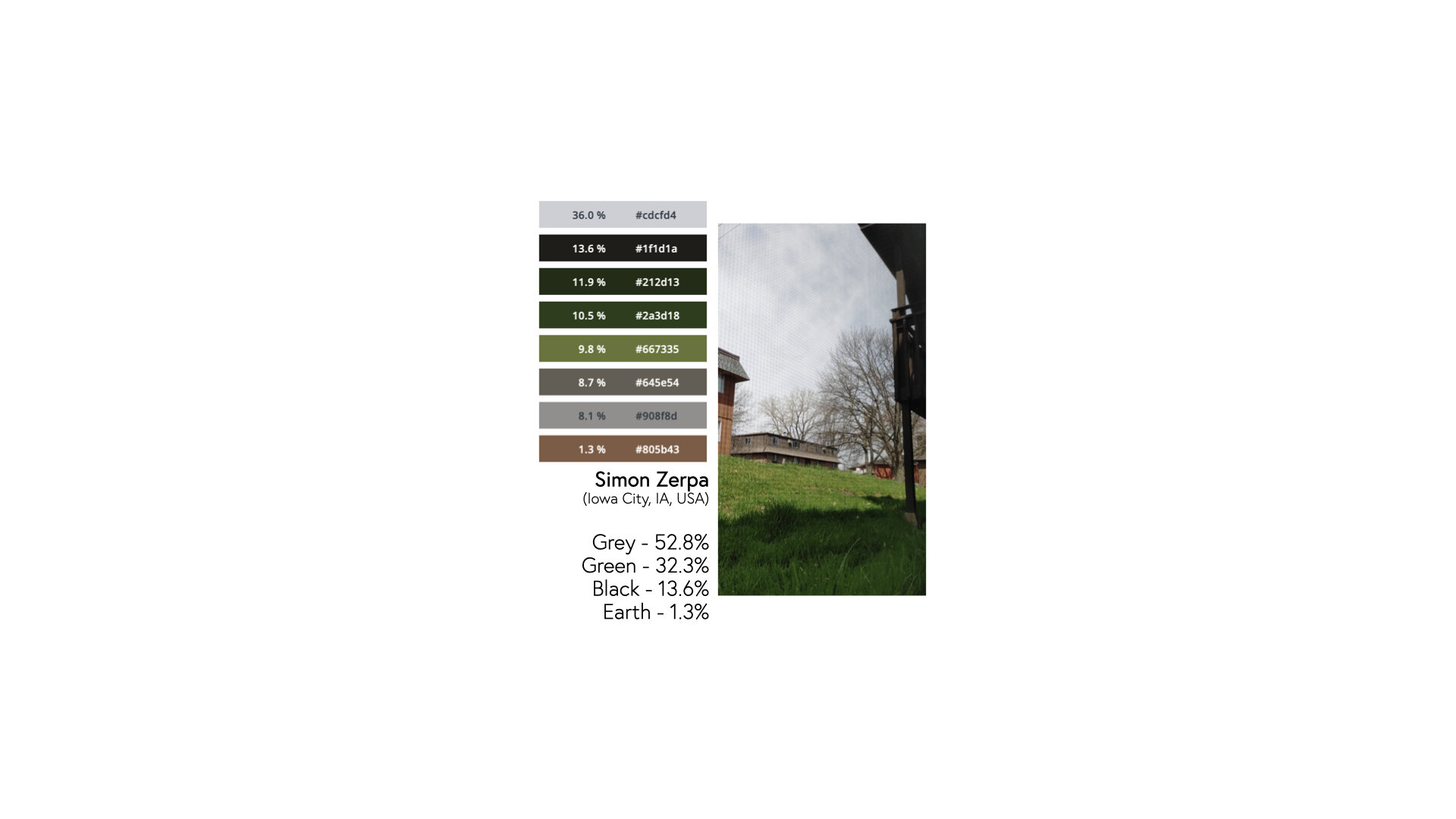
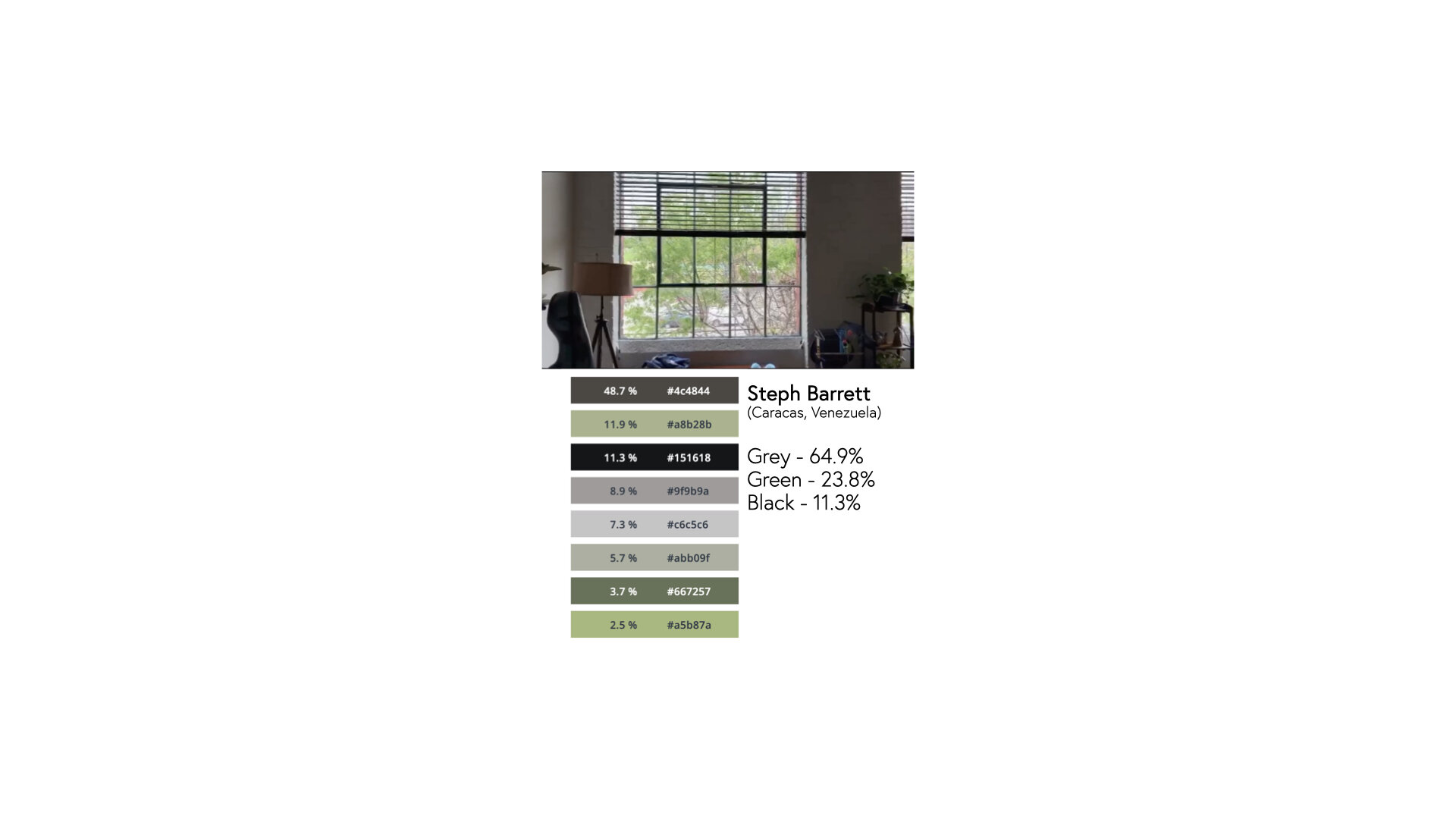
With the color palette for each video “extracted”, I proceeded to figure out the color composition of all 28 videos combined. From this I sorted out the colors from most to least prominent. I decided to make the length of the ColorLoops inversely proportional to how prominent each color was overall.
All data is expressed in %
I created the 9 ColorLoops with lengths ranging from 9 seconds to 5 minutes. I made the decision to organize the videos from shortest to longest first and then alphabetically by first name. The videos would appear consecutively in that order and the beginning of each video would trigger the ColorLoops associated with the colors in it. The amount of times each ColorLoop would play with each video was determined by the percentage each color represented in the video’s palette.
For example:, Emily’s video is made up of:
40% earth tones - 5x Earth Loop
27.5% green - 5x Green Loop
19.3% grey - 4x Grey Loop
6.1% pink - 2x Pink Loop
5.2% white - 2x White Loop
1.9% red - 1x Red Loop




